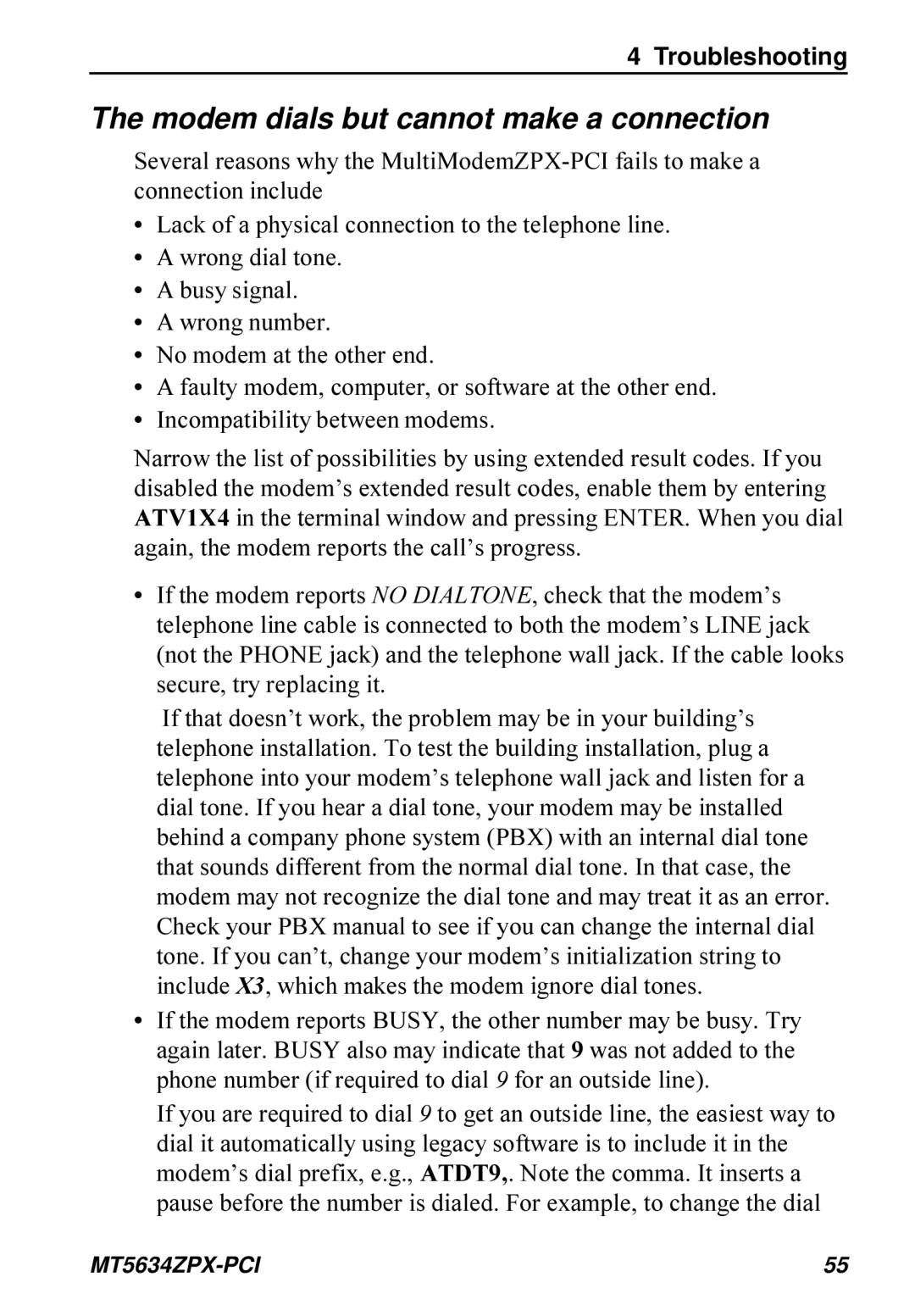4 Troubleshooting
The modem dials but cannot make a connection
Several reasons why the
•Lack of a physical connection to the telephone line.
•A wrong dial tone.
•A busy signal.
•A wrong number.
•No modem at the other end.
•A faulty modem, computer, or software at the other end.
•Incompatibility between modems.
Narrow the list of possibilities by using extended result codes. If you disabled the modem’s extended result codes, enable them by entering ATV1X4 in the terminal window and pressing ENTER. When you dial again, the modem reports the call’s progress.
•If the modem reports NO DIALTONE, check that the modem’s telephone line cable is connected to both the modem’s LINE jack (not the PHONE jack) and the telephone wall jack. If the cable looks secure, try replacing it.
If that doesn’t work, the problem may be in your building’s telephone installation. To test the building installation, plug a telephone into your modem’s telephone wall jack and listen for a dial tone. If you hear a dial tone, your modem may be installed behind a company phone system (PBX) with an internal dial tone that sounds different from the normal dial tone. In that case, the modem may not recognize the dial tone and may treat it as an error. Check your PBX manual to see if you can change the internal dial tone. If you can’t, change your modem’s initialization string to include X3, which makes the modem ignore dial tones.
•If the modem reports BUSY, the other number may be busy. Try again later. BUSY also may indicate that 9 was not added to the phone number (if required to dial 9 for an outside line).
If you are required to dial 9 to get an outside line, the easiest way to dial it automatically using legacy software is to include it in the modem’s dial prefix, e.g., ATDT9,. Note the comma. It inserts a pause before the number is dialed. For example, to change the dial
55 |
